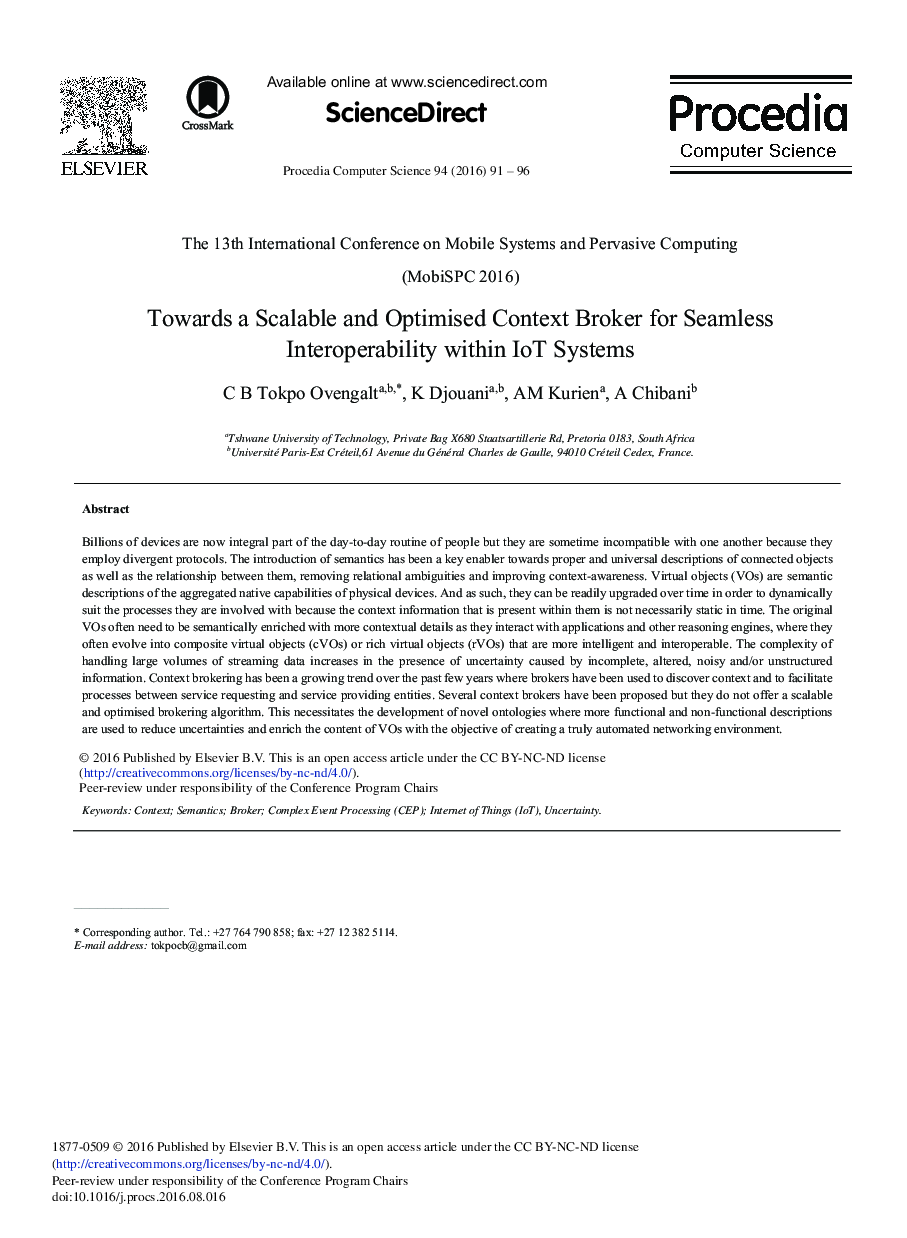| Article ID | Journal | Published Year | Pages | File Type |
|---|---|---|---|---|
| 570490 | Procedia Computer Science | 2016 | 6 Pages |
Billions of devices are now integral part of the day-to-day routine of people but they are sometime incompatible with one another because they employ divergent protocols. The introduction of semantics has been a key enabler towards proper and universal descriptions of connected objects as well as the relationship between them, removing relational ambiguities and improving context-awareness. Virtual objects (VOs) are semantic descriptions of the aggregated native capabilities of physical devices. And as such, they can be readily upgraded over time in order to dynamically suit the processes they are involved with because the context information that is present within them is not necessarily static in time. The original VOs often need to be semantically enriched with more contextual details as they interact with applications and other reasoning engines, where they often evolve into composite virtual objects (cVOs) or rich virtual objects (rVOs) that are more intelligent and interoperable. The complexity of handling large volumes of streaming data increases in the presence of uncertainty caused by incomplete, altered, noisy and/or unstructured information. Context brokering has been a growing trend over the past few years where brokers have been used to discover context and to facilitate processes between service requesting and service providing entities. Several context brokers have been proposed but they do not offer a scalable and optimised brokering algorithm. This necessitates the development of novel ontologies where more functional and non-functional descriptions are used to reduce uncertainties and enrich the content of VOs with the objective of creating a truly automated networking environment.
